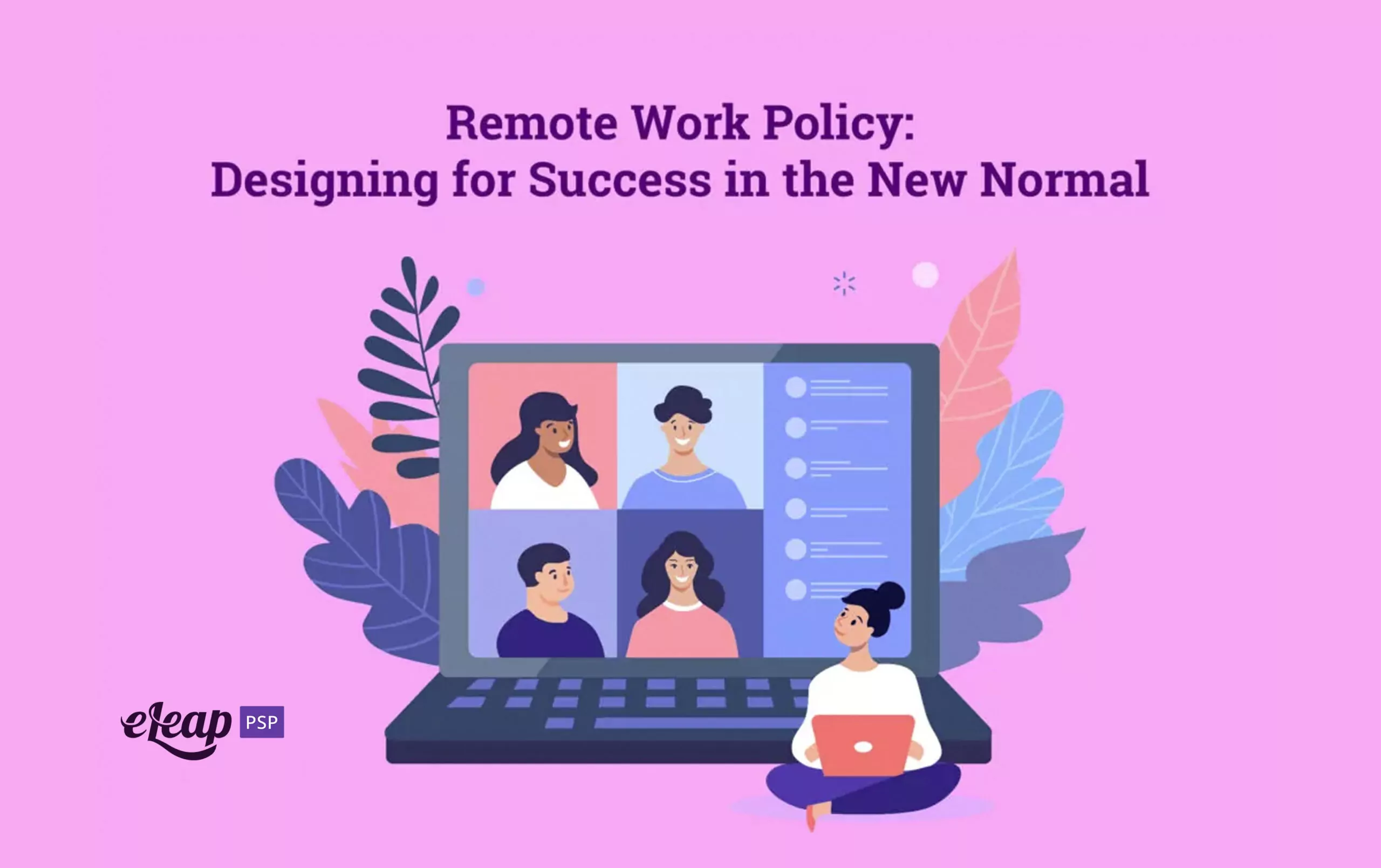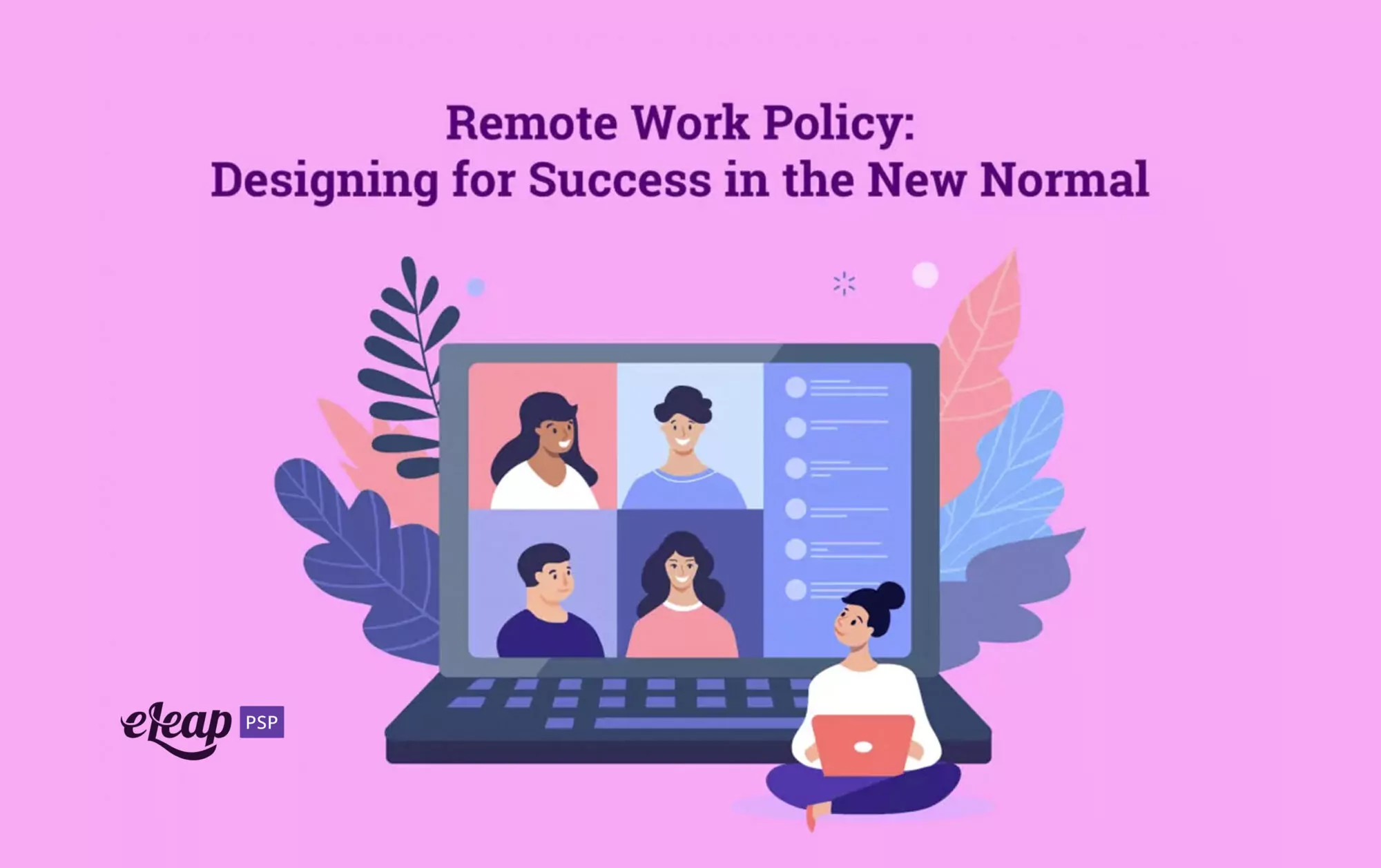Remote Work Policy: Designing for Success in the New Normal

At some point, we will stop saying “new normal”, but that time is not now. Too many organizations are still reeling from the impact of the pandemic. Too many leaders are still struggling to come to grips with the remote work world in which they now find themselves.
The first step in coming to grips with the world as it is currently is to create remote work policies. Call it a “telecommuting” policy, a “remote work” policy, a “remote office” policy, or what have you, it all comes down to the same thing. It is a framework designed to guide employees to success while they work from their home offices.

Designate Roles
The first step here is to determine who can work remotely and who cannot. Thankfully, many organizations have found that their entire workforce is eligible for remote work. What sets one role apart from another? You’ll need to answer a few critical questions while determining who is eligible for remote work and who is not, including the following:
- Is the employee’s role customer-facing? If so, can those responsibilities be upheld from a home office? If the role is customer-facing, will customers continue to require face-to-face interaction? Many organizations have seen a dramatic reduction in face-time needs with the pandemic and changing customer expectations.
- Is the employee’s role limited by access to equipment only available in the organization’s office? Is there any way to replicate that equipment for home use? If not, is there a way to provide the employee with remote access to that equipment? There are some obvious “no-go’s” here, such as manufacturing equipment that requires an employee to be physically present to operate it.
Once you designate who is and is not eligible to work remotely, you can move on to other steps. Note that you will need to create additional policies that pertain to employees who are not eligible for remote work, such as when they’re required to be on the premises, how social distancing must be handled, the use of PPE, and more.
Determine Remote Worker Attendance Requirements
Working remotely is challenging for those who have not spent a long time doing it. It’s easy to feel untethered from events and people. Your employees may disconnect from the organization in key ways. You must use your remote work policy to help provide some semblance of sanity and normalcy. One way to do that is to state your expectations and requirements in terms of time and attendance.
This might give some leaders pause. Why would attendance requirements change just because employees are working remotely? Surely things should be “business as usual”? Actually, there are many reasons that you might want to rethink things, or at least offer some flexibility, including the following:
- With everyone at home, including kids, it becomes challenging to maintain a consistent 9 to 5 schedule. Flexibility helps employees deal with their own new normal.
- Flexible working hours can allow employees to work during the times of day when they are at their peak in terms of productiveness and focus.
- Employees can match their work schedules to their working style.
- Employees are more satisfied overall, increasing talent retention.
- Employees become more engaged, further boosting organization-wide success.
- Flexible hours can be a key consideration when seeking to attract new talent.
- Flexible hours can reduce time off requests, decrease turnover, and even decrease sick time taken.
Of course, not all employees will be able to have complete flexibility. Many considerations will need to be made here, including whether other employees depend on one another for productivity, the need to be present in meetings, and whether the employee’s role dictates that they be available during specific hours of the day.
Create Your Meeting Policy
In a remote-focused world, communication is vital. Meetings, often maligned and avoided, take on new importance. One of the more crucial considerations, then, is creating and implementing a meeting policy. This will vary from company to company, but all share a few commonalities, including the following:
- What meetings will be held? On which days? At what times? Do those days and times mesh with everyone’s schedule? Will you mandate attendance even if meetings are scheduled at times when employees have elected not to work?
- What is your policy on meeting attendance? Do employees have any leeway or flexibility, or is attendance mandatory? How will you enforce those rules and what repercussions will employees who miss meetings experience?
- How much time will be allotted to each type of meeting? Does that duration support the purpose and importance of the meeting, or is it arbitrary? What safeguards will be put in place to ensure that meetings do not run past their allotted time?
As a general rule, you should strive to implement a few specific types of meetings as a bare minimum. These are as follows:
- Team Standups: These should occur daily, not long after employees start their day. They should be brief, though, taking between five and 15 minutes.
- One-on-Ones: These meetings allow individual employees to meet virtually with their managers for feedback. They should occur once a week optimally, but no less than once per month.
- Team Meetings: These are more robust meetings than standups, and can be held for many purposes, from progress reporting to brainstorming. They should be held weekly, but some teams may find they need to meet more regularly.
No One Size Fits All Policy
You will quickly find that while setting a remote work policy is important, there is truly no one size fits all approach that will work here. Take a cue from companies that you admire and those that seem to have a good handle on the remote work situation. However, remember that, ultimately, your policies must be created to support your workers and to achieve your organization’s goals.
Policies should serve specific goals, as well. They should guide, clarify, and help connect. They should not feel like burdens or insurmountable challenges.